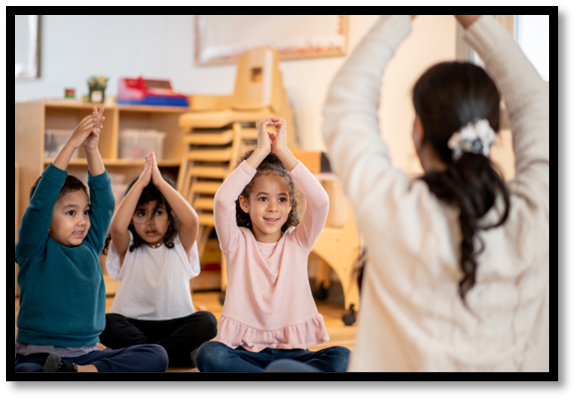
Jennifer M: Welcome, and thank you for joining us for the Melvindale-Northern Allen Park GrapeSEED story. I am Jennifer McDonald, and I’m the training and implementation manager for GrapeSEED. Today, Lynne Steelman is going to talk about the GrapeSEED experience at Northern Allen Park. Lynne Steelman currently serves as the state and federal program director and ESL specialist for a small suburban school district in southeastern Michigan with a high concentration of immigrant students.
She began her career as a classroom teacher and a literacy specialist and has worked in public education since 1993. Lynne completed a BA degree at the University of Michigan and continued her studies at Wayne State University where she earned a master’s in library and informational science.
She completed her specialist degree with a major in curriculum and instruction, and a concentration in bilingual and bi cultural education at Wayne State. At present, she is a PhD candidate at Wayne. Her research interests lie in the area of inclusion, educational equity and access to opportunity for culturally and linguistically diverse students.
As a district leader, Lynne facilitates professional development training, workshops for teachers, administrators and support staff. She analyzes test data and evaluates programs for the impact on student achievement. As a part-time faculty member at Wayne State University, she teaches master level courses in second language acquisition, sheltered instruction and task based lesson planning. She is a member of the Michigan Association of State and Federal program Specialists, the National Association of Federal Program Administrators, the Association for Supervision and Curriculum Development, the Michigan Association of Bilingual Educators and the Michigan chapter of Teachers of English to Students of Other Languages.
During the webinar today, if you have any questions, please feel free to type them into the question bar, because we did set aside some time at the end to answer those questions. With that being said, I would like to introduce you to Lynne Steelman.
Lynne Steelman: Thank you for the introduction. After listening to the bio I hope that they will be forgiving knowing that I have all of those different things on my plate. But at any rate, I am very happy to be here with you tonight. I’m thrilled to be able to share some of Melvindale’s experience with the GrapeSEED program with you and tell you a little bit about our district and some of our successes.
So let me start by telling you a little bit about our district. So Melvindale-Northern Allen Park is a small suburban district nestled between southwest Detroit and east Dearborn, so we are ideally situated to attract Spanish and Arabic families looking to move into other areas.
We have one early elementary school building for our kindergartners and first graders, one elementary school that serves our second through fifth grades, one middle school, and one high school. Melvindale is a very small community of roughly three square miles. And our motto is: Little City with a Big Heart. And that is so true.
We take care of our families. We take care of our students. It’s a wonderful, wonderful place to be. So 86% of our students receive free or reduced lunches. The median household income in Melvindale is roughly $45,000. Of the approximately 3,000 students enrolled in our schools, half speak a language other than English as their first language. Most of our English learners speak Arabic at home. About 20% of the population is Spanish with a few Vietnamese and Urdu speakers thrown in.
In 2012, our English learner population was 17%. Since then, we’ve experienced a rapid influx of immigrants from Yemen. Many of whom have interrupted schooling or no formal schooling at all. Unfortunately, you know, since the civil war began there in 2015 families have had to leave their homeland and it’s our fortune that they are coming here to us. In 2013, the population nearly doubled and has grown steadily over the past five years.
It looks like we might be stabilizing a little bit because we only saw 1% growth from last year to the end of October. That’s where we were. That’s when I calculated the 50%. So, you know, we are clearly undergoing a significant demographic shift, but it’s all good.
Now, while this has presented some unique challenges to us, we have embraced the change and responded in a number of different ways. We have brought in expert consultants to train and work with our staff. We’ve revamped some of our instructional practices. We changed some of our hiring practices, adjusted our programs and allocated funding and resources to meet the social, academic, and linguistic needs of our students.
One of programs that we chose to implement was GrapeSEED. Four years ago, we created a classroom for our kindergartners and first graders at our Rogers early elementary school. We adapted the GrapeSEED approach. Generally, students that score in the low to mid range on the WIDA screener, and the first graders at WIDA levels 1.0 to 1.9, that beginning level, are eligible for placement in the GrapeSEED program.
Typically she has about 60 students in her program at Rodgers. The teacher who is a highly qualified ESL endorsed instructor also speaks Arabic. And we have attached a support teacher to her to kind of assist with, you know, moving the children from their gen. ed. classrooms into the GrapeSEED classroom, to escort them. And then she’s also been trained for GrapeSEED so that when the GrapeSEED teacher is absent or is participating in some professional development that support teacher is able to step in and instruct the class. We don’t have to lose any instructional time.
This teacher, the bilingual teacher, sees four groups of approximately 10 to 15 students at a time, in one and a half hour blocks every day. She’s usually able to complete units one through five in a year. And last year, we did something different. We expanded the program at Rogers by-by placing the kindergartners that graduated from the GrapeSEED classroom that first year, we placed them into a first grade where we embedded units six through 10 into the curriculum. That teacher was trained in GrapeSEED and those children were exposed to, you know, not only … They had the one through five the prior year. They were able to get units six through 10.
And then it was like a mixed level, mixed ability, mixed classroom, so that we had some monolingual English speakers in there as well. But they just had low language skills, and vocabulary, because you know, GrapeSEED is not just for English learners. It’s also perfect for your students at poverty who are coming from homes where perhaps there isn’t a whole lot of sophisticated vocabulary used.
We know from the linguistic research that said, you know, children who are coming to us from homes where parents are both working class, might be exposed to 3,000 words a year. Whereas children who are coming from homes where one or both of the parents are college educated might-might hear and learn three times that number of words.
So-so GrapeSEED also addresses those kinds of needs as well. What we did to further expand the [00:10:30] GrapeSEED program was, I looked at our second through fifth grade program, which is really a newcomer program. It’s-it’s for students who are new to the country, for the most part, who just need, you know, additional focused oral language development. And we assign those students to that class. So we expanded into our second through fifth grades in that one program.
But for myself my vision is to continue to expand the GrapeSEED program. I’d love to see it integrated into all of our classrooms especially the kindergarten and first grade classrooms as part of the regular curriculum, because I know with our students being, you know, from poverty in addition to English learners, that all of the students are going to benefit from this. In fact, that’s something that’s-that’s recently come up.
Teachers are saying, “Well, this child is not bilingual, but he’s really low, and he would benefit from being in your program.” Yes, that’s true. I just don’t have space for him right now, because I have one teacher and I can’t overload her. Otherwise, I’ve diluted the program and we won’t see the results that we’re so pleased with right now.
So eventually, I’d just like to expand. As an ESL specialist and someone who is passionate about second language acquisition research and theory. I’ve looked at the GrapeSEED program from the standpoint of second language acquisition research. While … And while I’ve never really been a fan of a canned program, so to speak, I can tell you that GrapeSEED has all these pieces that are part of best practice in working with English learners.
So, GrapeSEED has given our children this vehicle to strategically and purposefully develop their oral language skills. It’s helped the teacher. We’re starting to see, you know, when these kids are going back into the … into their gen ed classroom after their exposures and time in the GrapeSEED program, that they’re participating more. They’re speaking out more. It-it-it’s such a wonderful program.
All right, so let me let me just move on. I want to say all these wonderful things about GrapeSEED, so bear with me. We are a SCIOP district. That means we use sheltered instruction to support our English learners. While they’re learning English, they have to simultaneously learn English, the content, and a new culture. The reason we use SCIOP is, it’s partly out of necessity, because of our population, and partly because our goal is for our children to learn English.
We are not a dual language program. In some small way, I would say there are shades of transitional bilingualism, because we do have bilingual teachers and aids who use native language for clarification during instruction. But for the most part, we really are, you know, content based on English only.
You know, some people see English as the language of opportunity, and that’s true. I mean it’s the language of business. It does open doors. But even more so, this is … English is the language that we use to deliver instruction. It’s also the language that we use to assess students. So if we want our students to compete, then they need to learn English. GrapeSEED is one tool that helps us reach that goal. Okay?
All right, it has been … GrapeSEED has been for us, that extra does, if you will, that our students need in order to accelerate their English learning. And I’m not going to bore you with all of the research and pedagogy that supports GrapeSEED, but I do want to highlight for you some of the features that I find most attractive, and why I think GrapeSEED is a good choice for English learners.
There is a lot of movement and action with music and songs, what we call total physical responses, TPR. Language is a risky business, so it’s important for students to feel comfortable and not threatened. The routines that are part of GrapeSEED help students feel secure. They know what to expect, and so they’re more willing to step out on that limb and try speaking out loud or, you know, mistakes are okay. That’s how they learn. And this is kind of the attitude that is promoted through the program. And children are really responding very well to that.
Okay, so just a few more points. The repetition and practice using the language through stories and songs, listening and reading reinforces, uh, you know, not-not just those basic literacy skills, but also fluency and pronunciation, which you don’t always find in classrooms. You know, just-just-just having something that … where students can work on pronunciation correctly. It’s-it’s that repetition that helps. During a GrapeSEED lesson, text is enhanced with either highlighting or pointing. And-and all the while, student are learning sight words, letter sounds, blending and-and new vocabulary.
The communication aspects of the program promote talking in complete sentences and practice using that expanded discourse. GrapeSEED addresses all of the domains of language, listening, reading, speaking, and writing. The pictures, visuals and learning activities are engaging.
On several occasions, I have visited the GrapeSEED classroom and literally, the expression on children’s faces light up when they enter the room. Now, admittedly, part of that is due to the teacher. There’s that familiarity because she is of the same culture. However, GrapeSEED has such an engaging format that students are motivated. They want to learn. They use … and they want to use lang- English language to communicate. And the teacher is so gentle and kind in how she works with these students, they want to perform. They’re eager to perform.
So in-in-in using English language to communicate, students are then allowed to grow as readers and writers, okay, which enables them to access more curricular content, to feel successful, to build confidence and self-esteem while using English verbally and written.
Okay, so in terms of WIDA, all right. In-in Michigan, we have adopted the WIDA access assessment test. It’s-it’s based on the WIDA framework. There are five standards. GrapeSEED addresses two of those standards, which is very appropriate for newcomer students. The social and instructional language is a big part of GrapeSEED.
There’s also the language of language arts, the literacy, the skills, the vocabulary. All of that, letter sounds, identification, and so on. So it addresses those standards as well, which, you know, I find is quite helpful. Okay, so I’ve examined the program in terms of early literacy. Now, GrapeSEED exposes our students to essential reading components; phonemic awareness, phonics, fluency, vocabulary development and comprehension. Again, this is really a second opportunity for English learners to develop those oral language skills that will allow them to become good readers and writers.
And writing, which we know is a developmental activity, is often the last language domain to develop, and that’s regardless of, you know, English learner or non-English learner. Typically, that is the last skill to develop. But here are a couple of examples that the, uh, GrapeSEED teacher shared with me. And I apologize. I know it may be hard for you to see this on your screen. But in the photo on the right, there are pictures with words to complete using double E, and the ER ending, and a shared writing activity.
The journal writing on the left is an original composition based on a prompt given to the students. And this was done, uh, a couple weeks ago. So … no, I’m sorry. This is … this is the end of May, so this is like toward the end of last year. So, after a year.
But, I want to say that writing does happen every day in the GrapeSEED classroom, and that’s good, because you can develop reading and writing skills simultaneously.
Okay, so we live in a data driven world, and I’d like to share some numbers with you that will give you some evidence of our success with this program for our students. In the winter, uh, students were assessed with, um, MLPP, just for letter identification. And again, this may be difficult to read, because it’s in this slide. But the average score on the ID portion, the letter ID portion of the assessment in winter was 15. In the spring, it was 46, and that is significant growth. And growth we weren’t seeing prior to GrapeSEED.
When these children enter-entered third grade, there were not measurable differences in their DRA reading levels. You couldn’t tell the difference between an English learner, and a non-English learner. The gap was no longer evident. And in prior years, we saw big gaps.
Okay, so on the NWEA a lot of schools use the mapped skills test. You don’t see all of the 90, or I’m sorry, all of the 30 students that were randomly included in the sample, because I couldn’t get all the chart on the screen. And there were like 61, 62 students in this whole group. So I randomly sampled, and-and did the, uh, calculations through these students. So I want to draw your atten-
I know it’s hard to read, so I want to draw your attention to the statistical summaries at the top. The students on the left participated in GrapeSEED. The students on the right did not. Uh, basically, to summarize, the effect sides for the GrapeSEED students was higher than it was for the students not in the program.
Now, all of these students, both groups are both English learners, okay? So even though they may have started out the year at a different language level, we’re still … we’re look- we’re comparing … We’re looking at the relationship between the program and the growth, and so the GrapeSEED and student growth, and then the classroom instruction without GrapeSEED and the student growth. Okay, just basically, you see that 1.7 and 1.1 for the effect sizes.
Both groups show, you know, significant effect, however, the GrapeSEED kids, yay. They scored higher suggesting that the relationship between the program and student achievement was stronger for those kids than it was for the students not getting that second layer of targeted language instruction and practice that GrapeSEED provided to them. Okay?
Now, I don’t want what I’m about to say to be mistaken for an advertisement. On the contrary, this is my testimonial of the positive results I’ve seen with GrapeSEED. I can, wholeheartedly, without reservation recommend this program to any school interested in better leveraging their English learners by positioning them with focused oral language instruction. GrapeSEED hasn’t solved all our problems, but it has empowered the teacher, given me peace of mind knowing that language is being emphasized and taught explicitly, and most importantly, it has opened the gateway to literacy and academic success for our English learners.
Now, in closing, okay, when children learn language, they are engaging in the very foundation of learning itself. One educational theorist Halliday said, “Language is the medium in which teaching and learning take place in schools, the medium through which we transform and develop our thinking.” GrapeSEED is that tool. I know there’s no such thing as a magic bullet. However, GrapeSEED, the approach, is more targeted than what we have been doing and what I have seen happening in our classrooms, and in working with teachers from surrounding districts who are students in some of my Wayne State classes.
I feel really good about where we’re going with GrapeSEED. I want to thank each of you for joining me today.
Jennifer M: Thank you so much for sharing how GrapeSEED is such a great fit for your students, and those results that you’re getting. So thank you. There was one question that’s come in.
Lynne Steelman: Okay.
Jennifer M: How do your parents feel about GrapeSEED?
Lynne Steelman: So our parents love GrapeSEED. We-we always have a parent meeting to introduce them to the program. And then we meet with them a couple of times throughout the year. That parent connection is a big part of GrapeSEED. It’s a part of education, period. We need to collaborate with our parents. But they like the take home readers, and they appreciate … they really appreciate that we have a specific program that is going to help their children learn English. So it’s very positive. Positive, uh, feedback.
Jennifer M: Great. Well we hope everyone had a chance to learn how GrapeSEED can help their children overcome language barriers in their districts. Following the webinar, there will be a quick survey to gather your feedback. We would really appreciate if you would just take a couple minutes to answer the questions. Once again, we’d like to thank you for joining us




Ready to Start Your Journey?

6425 Living Place
Suite 200 #1021
Pittsburgh, PA 15206
Tel: 800-449-8841
Email: contact.us@grapeseed.com
© 2024 GRAPESEED INTERNATIONAL PTE. LTD.
